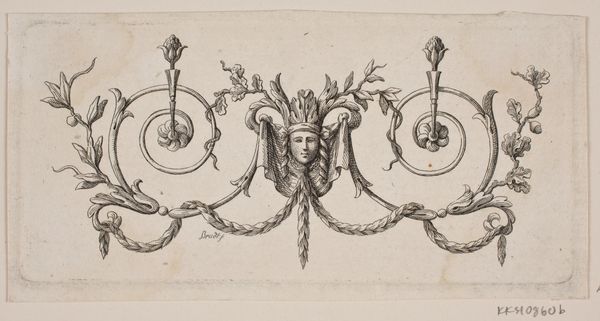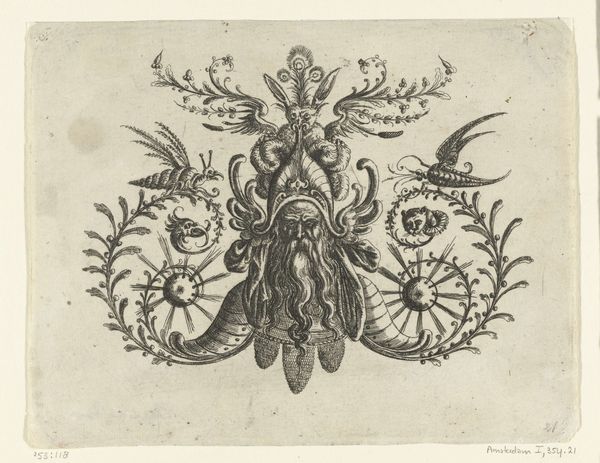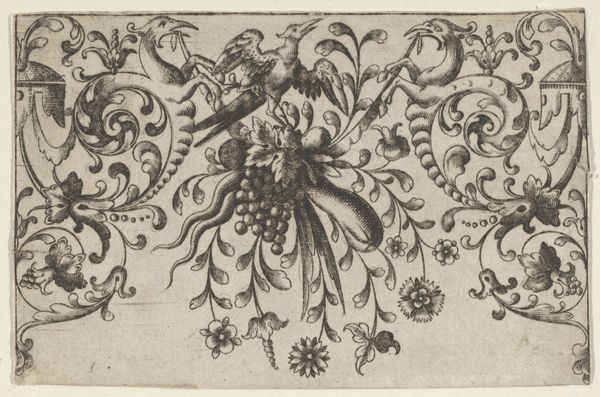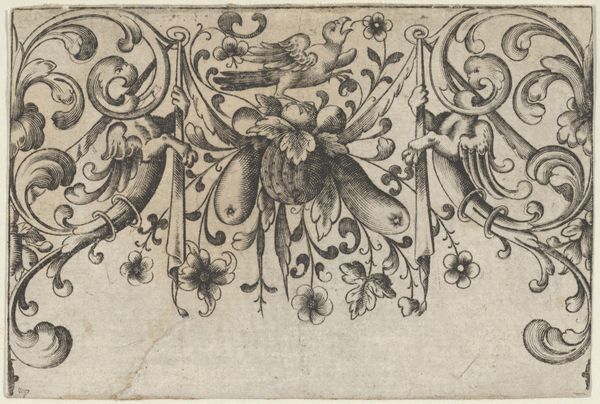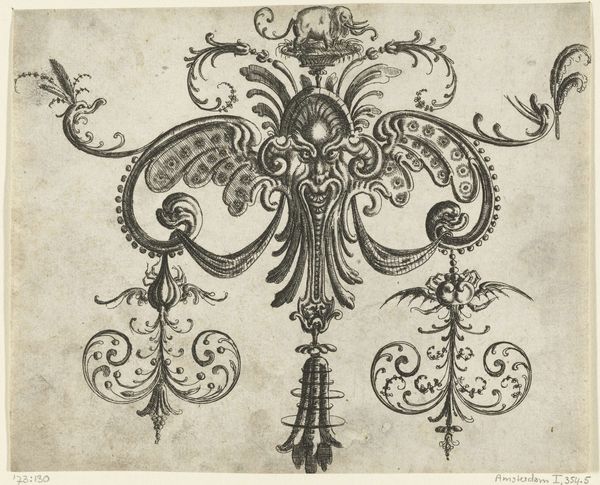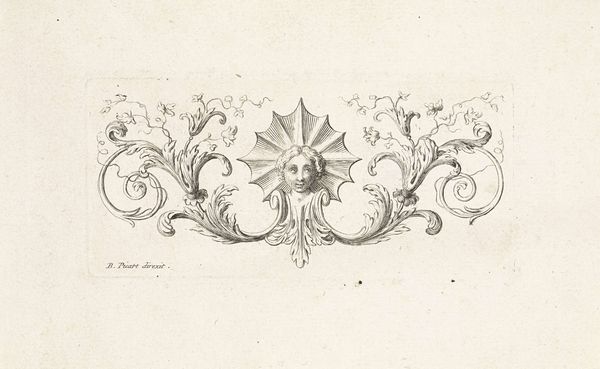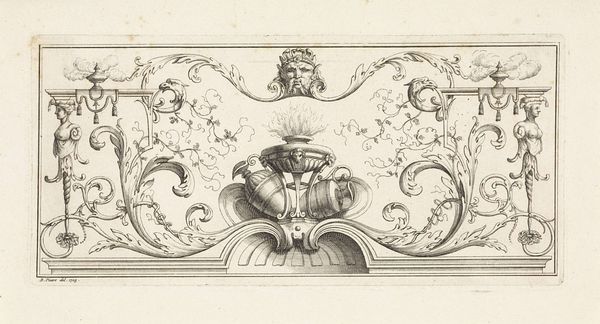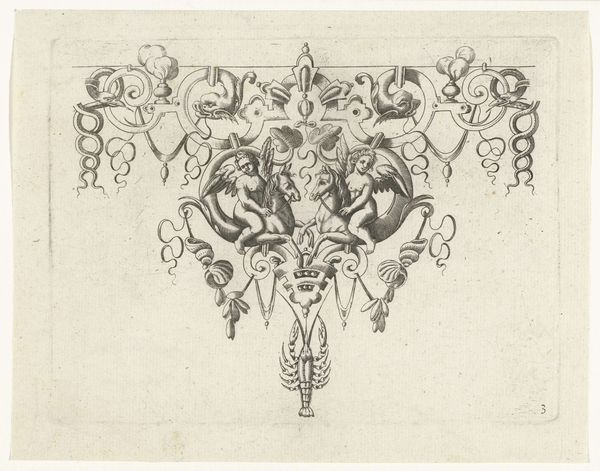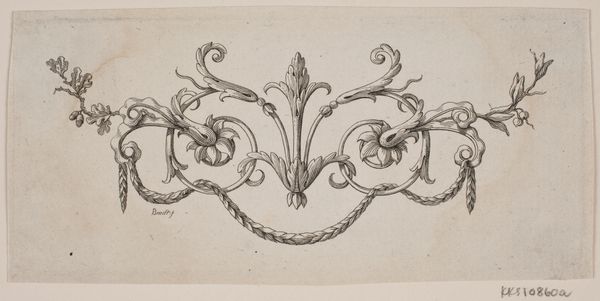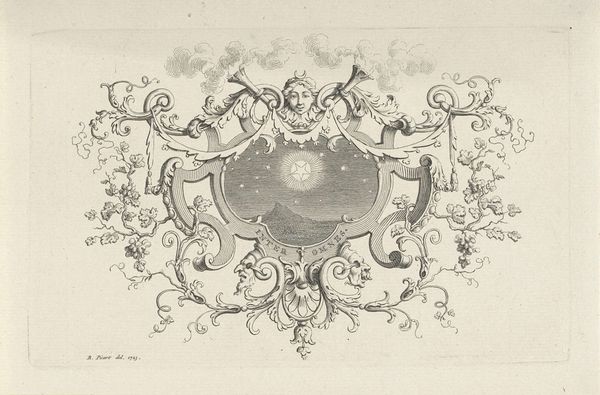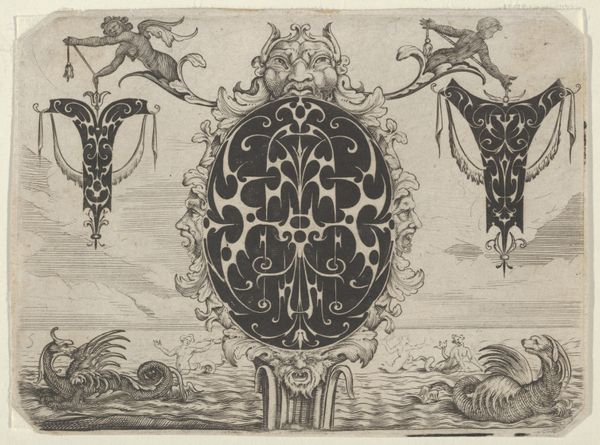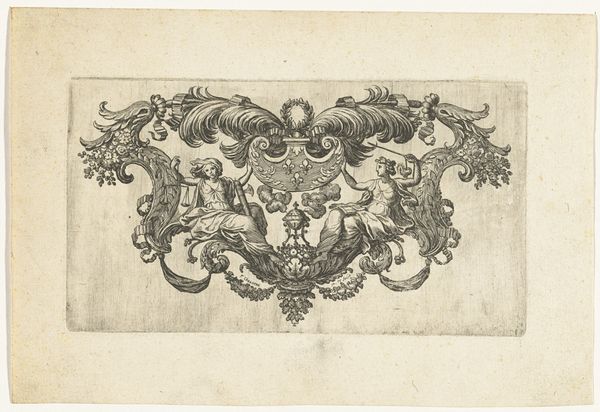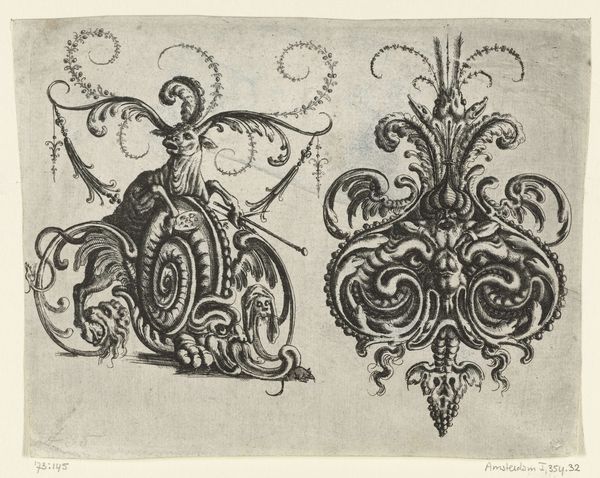
Dimensions: 75 mm (height) x 140 mm (width) (plademaal)
Editor: This is "Vignet med Bladslyngning," a print by J.F. Clemens dating from around 1776-1780. It's an engraving, quite decorative and baroque-feeling with lots of swirly foliage. It looks like it might be a design for something else? What strikes you about this piece? Curator: I see it as a direct reflection of the period's obsession with ornamentation and display of wealth. Engravings like this one circulated widely, acting as a visual vocabulary for artisans and architects. They served a crucial function in disseminating design trends beyond elite circles. Notice the mask at the center – it projects authority, doesn't it? How might such a symbol function in, say, a public building or a wealthy household? Editor: That's interesting! It does feel very official. So, this wasn't just about pretty decorations, it was about showing power? Curator: Precisely. The elaborate ornamentation would have visually communicated status and sophistication. What kind of political implications do you think art like this would entail in pre-revolution Europe? Editor: I hadn't thought of it like that. It makes you wonder about the social function it performed, reinforcing class distinctions even through seemingly innocuous decoration. Curator: Exactly! And consider how these images helped spread Neoclassical ideals, subtly shaping taste and cultural values. Seeing it now, knowing what happened afterward politically, makes the object feel imbued with ideology, doesn’t it? Editor: It completely changes how I look at it. Thanks to your explanation I learned how it’s all so much more than ornamentation. Curator: And I realized just how impactful something seemingly as benign as a print design could become with its embedded socio-political context.
Comments
No comments
Be the first to comment and join the conversation on the ultimate creative platform.
